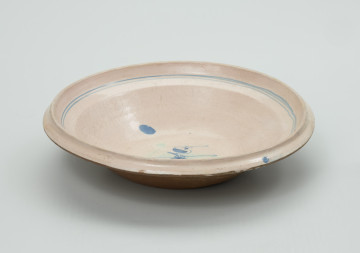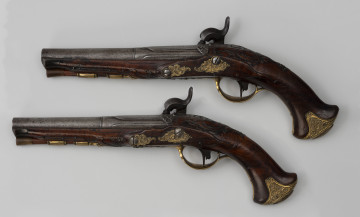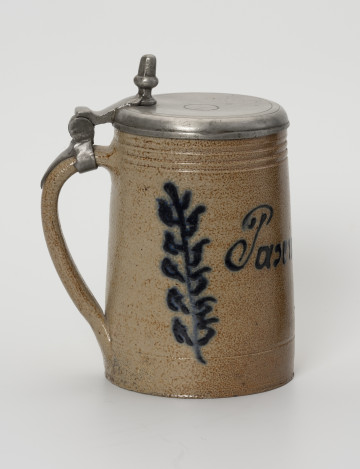
Plate
1841 — 1860
National Museum in Szczecin
Part of the collection: White ceramics from Szczecin
A plate of the Stettiner Ware type made in 1795 belongs to the earlier period of the production and use of lead-tin enamel-coated vessels in West Pomerania. At this time, in addition to the most characteristic oxides – cobalt (which dyes blue) and copper (which gives a green colour) – manganese oxide was used to paint ceramics, with which shades ranging from black to purple were obtained, and chromium oxide or antimony, used interchangeably as a yellow dye. The painting was usually done by the wives and daughters of the potters and the final decorative effect depended on their personal artistic talents. They moved around motifs typical of white-glazed vessels. One of these was a distinctive architectural motif consisting of a tripartite building in which the central uppermost part was a tower, topped, as in the case of the present building, by a sphere or weathervane. This representation suggests the secular nature of the building – probably the town hall. A second frequently used motif in eighteenth-century and early nineteenth-century Stettiner Ware vessel decoration is a basket shaped like an inverted cone with flowers. This element, although faintly visible, is centrally located under the building with the tower. The basket was painted very schematically and delicately. However, it was edged with a much stronger floral accent. Iwona Karwowska
Author / creator
Object type
plate
Technique
throwing (pottery technique), painting, glazing
Material
ceramic, copper oxide, manganese oxide, chromium oxide, antimony oxide, lead-tin glaze
Origin / acquisition method
legal transfer
Creation time / dating
Creation / finding place
Owner
Muzeum Narodowe w Szczecinie
Identification number
Location / status

1841 — 1860
National Museum in Szczecin

circa 1773 — 1811
National Museum in Szczecin

1840 — 1860
National Museum in Szczecin
DISCOVER this TOPIC
National Museum in Szczecin
DISCOVER this PATH
Educational path